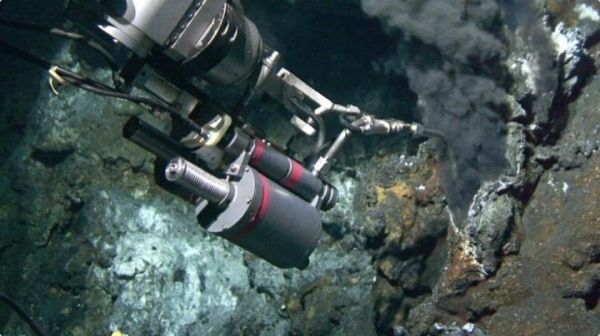For years, researchers looking at seafloor sediments would find bits of black carbon along with organic carbon strewn across the ocean floor, but they couldn’t say exactly where it originated. The challenge with studying deep marine carbon is that it is a mixture of fresh material delivered from the surface and an aged component, the origin of which had been previously unknown.
Now, a new University of Delaware study recently published in Nature Communications shows for the first time that the old carbon found on the seafloor can be directly linked to submicron graphite particles emanating from hydrothermal vents.
Identifying the sources, transport pathways and the fate of this seafloor carbon is key to understanding the dynamics of the marine carbon cycle.
The ocean acts as a reservoir for substantial amounts of both organic carbon and carbon dioxide, which can lead to ocean acidification or be converted to form organic carbon via photosynthesis. Thus, it is important to understand how carbon moves between different phases in the ocean and how it might become sequestered in the deep ocean for extremely long periods of time. This work shows that organic carbon and carbon dioxide can also be converted at vents to another form of carbon, graphite.
Read more at University of Delaware
Image: Alvin, the undersea research vehicle, has a robotic arm that deploys a hydraulic fluid sampling device with a "snorkel" that sticks into the black smoker fluid. The operation helps researchers look for old carbon and graphite. (Credit: Photo courtesy of Woods Hole Oceanographic Institution and the Advanced Imaging and Visualization Lab)


